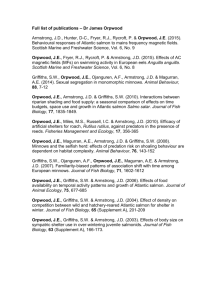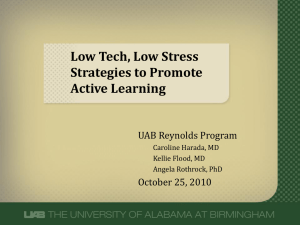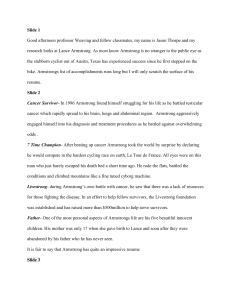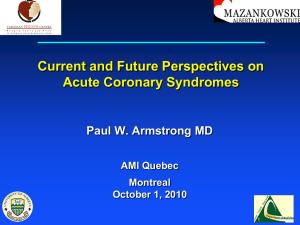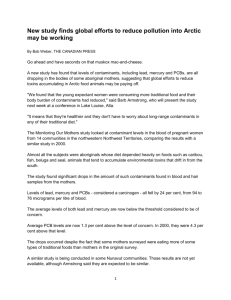Lance Armstrong and Livestrong: Crisis management between
advertisement
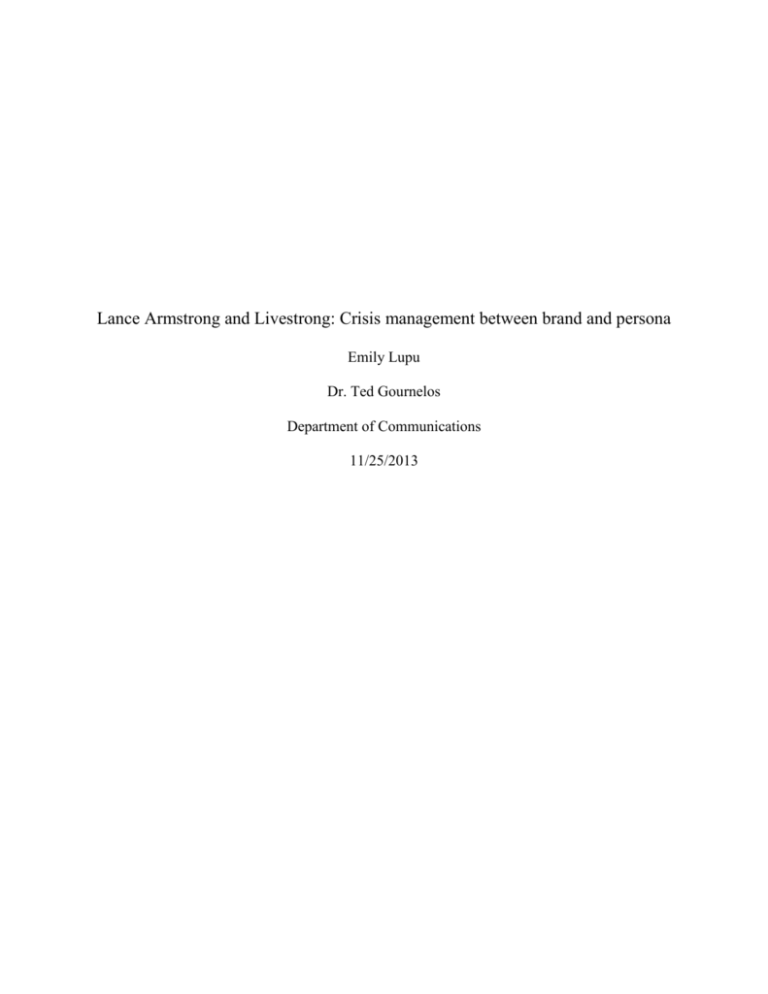
Lance Armstrong and Livestrong: Crisis management between brand and persona Emily Lupu Dr. Ted Gournelos Department of Communications 11/25/2013 2 Abstract The purpose of this paper is to analyze the steps taken during crisis management by athletes and their respective organizations. In the case of Lance Armstrong, years of allegations and attacks ended with a much-prolonged nationally televised interview. The implications of an athlete’s negative publicity during a crisis are also investigated, as an athlete’s personal identity is inherently connected to the brand identity of their respective organization. Armstrong did not execute effective crisis management, as years of denial had tarnished his credibility and overall likeability. The conclusion that can be made is that during crisis management, the best move is to come clean immediately after the scandal surfaces. Moreover, an inadequate use of social media after a crisis has negative effects, especially when social media dominates sports public relations. Armstrong’s organization Livestrong, on the other hand, executed effective crisis management by separating itself from its founder and reiterating its philanthropic mission. Livestrong used social media to pivot and share their mission, turning crisis into opportunity. Crisis management is most effective when carried out ethically, as this establishes credibility, trust, and respect among the targeted publics. 3 The public image of an athlete and its corporate sponsor is closely linked. For this reason, there have been numerous incidents where an athlete has drawn negative attention from a crisis, affecting not only their personal and professional image, but also the respect and credibility of its respective organization. After two years of criminal investigation by the United States Anti-Doping Agency (USADA) that was fueled by accusations of doping and trafficking drugs based on blood samples from 2009-2010, as well as testimonies from witnesses, Armstrong finally admitted the truth. Yet, Armstrong had defiantly and repeatedly denied all allegations each year following up to the 2013 confession. After USADA provided concrete evidence of Armstrong’s accusation, UCI announced on October 22, 2012 that Armstrong was stripped of all titles, including his Tour de France titles, and was banned from cycling for life. This crisis impacted not only Armstrong, but also the organization that he founded, Livestrong. The personal brand identity of an athlete and the brand identity of its respective organization are connected, thus image restoration is applied to the individual at fault and to the organization that embodies the ideals, morals, and behavior of the athlete it supports. Moreover, ethics are important when dealing with crisis management. Besides the fact that doping is illegal in sports, the reputation of Armstrong and Livestrong is based on philanthropy and the honorable fight against cancer, inevitably making the crisis seem more offensive. Crisis communication should be carried out ethically in order to establish credibility and trust. The fact Armstrong denied allegations for years, instead of coming out with the truth, was absolutely unethical. Moreover, his seemingly unremorseful demeanor and failure to disclose information led to an unsuccessful attempt at crisis management. Livestrong was ethical in their crisis communication strategies when dealing with the scandal. 4 In order to fully understand how crisis communications impacts athletes and their organization, it is important to examine the steps that are taken from a public relations standpoint in restoring the image of both the athlete, and the organization. The first issue at stake is the individual athlete and crisis. As a community engaged concept, sports is at the heart of the United States, uniting people as well as triggering emotions from ardent fans or anger from competition. The sports industry is one of the largest industries. Because of its popularity, the athletes who are the faces of an organization are under constant watch, calling for constant public relations. Whether personal or professional, an athlete’s actions are exposed to the public. Athletes are often put on a pedestal, representing a hero-like symbol to loyal fans. This is why it is so important to maintain a positive public image, as any negative publicity affects not only the athlete, but the sponsors and organizations that support them. As cited in Benoit and Hanzcor (1994), “as sports have become an increasingly important part of the American fabric, athletes are often called upon to defend themselves [in a crisis]” (Blaney et al. 2013). From an ethical stance, athletes are expected to be honest with the public and the sponsors/organization they are linked to. Although Armstrong eventually came out and told the truth in an interview, his cold demeanor, and history of denial proved to be an unsuccessful attempt at crisis communication. When applying Benoit’s IRT (Image Restoration Theory) to athletes, Benoit asserts: “A damaged image can cost an individual or a corporation millions of dollars, which is why it is imperative to understand key image repair strategies” (Benoit as cited in Blaney 2013). In order to effectively apply this theory, Benoit states that “First, the accused must be held responsible for an action. Second, the act must be considered offensive” (Benoit as cited in Blaney 2013). After these two qualifications are met, the communications discourse is evaluated through five broad 5 categories of image repair strategies. Armstrong executed certain image repair strategies, while neglecting others. The second issue at hand is when the crisis expands on an industry level because athletes and their organizations have a shared brand identity that is inherently tied to their public relations and ultimate success. The effect that negative celebrity attention has on the organization that supports them has been studied for some time. Unfortunately for organizations that decide to accept celebrity endorsements, or align themselves closely with an individual who embodies the company’s brand identity, a crisis can deeply affect credibility and success: To date, scholars have focused on the range of positive outcomes emanating from successful sponsorship scenarios, such as links with successful endorsers. Less attention has been paid to understanding possible negative outcomes, which may result from instances where endorsers are linked with unfavorable actions. In the face of rapid technological advancements and increased media dedicated to celebrity endorsers, a greater understanding of the possible negative outcomes becomes a necessity” (Doyle et al. 2013) Similarly, as stated in Repairing the Athlete’s Image: Studies in Sports Image Restoration, “However, when negative publicity becomes associated with a represented group or person, practitioners must implement a communication strategy designed to salvage the image of their clients” (Blaney et al. 2013). The image of a public figure such as Lance Armstrong would inevitably affect the image of Livestrong, unless Livestrong handled their crisis communication effectively. Livestrong, while not condemning Lance prior to concrete evidence, began to 6 separate itself from the brand identity that was encompassed by Armstrong’s persona. Instead of focusing on the crisis, Livestrong used the crisis to reiterate the organization’s mission. In this way, they turned an obstacle into an opportunity, as Smith states, “Organizations under attack may use public attention generated by a crisis to explain their values and demonstrate their quality” (2013). The third and final imminent issue is the impact that the media (with an emphasis on social media) has on athletes during a crisis. In an age where social media dominates much of the public relations industry, it is useful to know how to effectively use social media as leverage during a crisis. In terms of public relations in sports, athletes are viewed as celebrities. This means that their successes and failures are under close watch and scrutiny. Athletes therefore, must take the appropriate moves when dealing with a crisis that could potentially tarnish their image for life, moreover the image of the organization they are linked to. When an athlete like Lance Armstrong is facing a crisis, every public relations move is documented, analyzed, and responded to immediately. Social media can either break you, or make you. Armstrong was not so successful with his use of social media, as he initially used it to lie. Livestrong, on the other hand, was successful at recognizing the importance of social media. As contended in the book Public Relations Cases, “Engaging the public through social media expands an organization’s reach during a crisis” (Hayes et al. 2013). Livestrong used social media to highlight the organization’s philanthropic mission. The Lance Armstrong crisis was a complex situation because of the factors that contributed to the scandal prior to and after the crisis. Prior to confessing, Armstrong had used his website as a main source of communication with the public. In the light of all the allegations, 7 Armstrong repeatedly made statements on his website, such as “I have never doped. These charges are baseless [and] motivated by spite” (BBC 2012). Additionally, he took to his Twitter to link statements that he made in response to charges. Devoted fans who followed the cyclist on Twitter unknowingly (or knowingly) stood by him and showed support; others did not. Armstrong spent most time using social media to refute allegations, and spent less time using it to apologize. In Armstrong’s case, social media led to his downfall, as after the doping scandal surfaced, and he admitted his guilt, social media served as a voice for angry fans, and supporters. However, Livestrong handled social media much more effectively. Four crisis management efforts will be analyzed to determine their success and ethical adherence: Armstrong’s interview with Oprah Winfrey, his Twitter, Livestrong’s blog, and Livestrong’s press release. In sports public relations, the sharpest focus is on the fans of every sport, team, or athlete. After all, the fans are the ones who support the sport enterprise by buying tickets, gear, donations, and much more. Therefore, it is crucial for athletes in the spotlight to know how to relate well to fans and the general public. It is for this reason most athletes hire public relations professionals. As stated in the book Repairing the Athlete’s Image: Studies in Sports Image Restoration, “Media training, for example, is one of the single most important areas athletes, coaches, managers, and organization executives must master because they are the literal public faces of the sports and sports organizations for which they work” (Blaney et al. 2013). Moreover, “The epideictic character of sports public relations rests largely on two central public relations genres: press conferences and media interviews” (Blaney et al. 2013). Essentially, press conferences and media interviews are the two ways in which athletes have the opportunity for message dissemination that reaches the public firsthand: “Each interview a sports figure does extends an image repair effort through adaptation of multiple audiences...Interviews, then, 8 become the fodder for the public record and what audiences may remember most about the sports figure and the controversy” (Blaney et al. 2013). That being said, Lance Armstrong used one of the athlete’s crisis communication strategies by carrying out a two-part, 90-minute interview with Oprah Winfrey on January 4th, 2013. While it was arguably doomed from the start because of years of constant denial and dishonesty, it was still a means to come clean to the public. The fact that he chose Oprah Winfrey was indeed strategic, as she is a prominent figure/opinion leader, and millions of people would tune into her show. As expected, the interview stirred up negative reactions. When analyzing the interview using Benoit’s Image Restoration Theory, one could say that Armstrong adhered to most of the strategies. The Image Restoration Theory holds that athletes in sports public relations undertake either or all of five categories of strategies: denial, evasion of responsibility, reducing offensiveness of the act, corrective action and mortification. Unfortunately, Armstrong had lied for years, so his credibility was irrevocably damaged. In the interview, when asked if he and his team pulled one of the most sophisticated, professional, and successful doping program ever, Armstrong responded that although it was professional and smart, “to say that the program was bigger than the East German doping program in the 70’s and 80’s? That’s not true” (The Telegraph 2013). According to the IRT, this is an attempt to reduce the offensiveness of his act by comparing. Additionally, Armstrong stated that doping was a result of the pressure put on him to maintain the “mythic perfect story” (The Telegraph 2013) that was created around his persona: overcoming a disease, having a happy marriage and children, and winning the Tour de France seven times. This is an example of evasion of responsibility. While he does admit he is to blame, he still talked about external factors that influenced his behavior. An athlete should not do this unless his guilt is truly questionable, 9 especially after lying for years, he should have stuck to accepting full responsibility. As the interview was split into two separate parts on two different days, it was important to relate to the fans and general public during the first night the interview aired. Instead, Armstrong came off and cold and unremorseful, proving that likeability is a huge factor in repairing your image in crisis relations/public relations. He only showed mortification (pathos) during the second part of the interview, when not as many people were tuning in. As a result, this crisis communication effort was not successful. As there were no prior press conferences that addressed the crisis, the viewers were struck with his confession, even though some people saw it coming. The second crisis communication effort that Armstrong made was the use of social media. If executed correctly, social media can be an advantage for an athlete during a crisis. Yet, if executed inadequately, it can be perilous to their image. As stated in the book Sport Public Relations: Managing Stakeholder Communication, Social Media in Sports Social networking represents a new and potentially perilous frontier in the world of sport public relations. The ability of athletes to maintain their own publicly viewable web pages, filled with pictures, language, and interactive messages to friends, poses quite a challenge for sport public relations workers, because of the potential exposure of damaging information being uncovered by fans and the media (2012). On his Twitter, he utilized the following strategies: attacking the accuser, bolstering and stonewalling, in contrast to the interview where he demonstrated shifting blame, simple denial, provocation, victimization, mortification, and retrospective regret during the interview. When 10 image repair is necessary, digital and social media offer the capability to introduce alternative narratives and redirect the audience’s reactions. Social media is a useful in shifting public attention away from the crisis. After the interview, he neglected any image-repair tweets that would have removed doubt or skepticism among his fans and the general public. Because of the advantage Twitter (social media in general) gives an athlete by allowing for public opinion and the ability to express an identity, Armstrong could have maintained a remorseful and assertive position on Twitter that would have possibly related to his followers. Instead, he lessened the effectiveness of future messages delivered via Twitter, as much of what he said was considered propaganda. Armstrong went on Twitter and removed his Tour de France titles that were in his biography. Additionally, he changed it to say “Founded @Livestrong. Raised half a billion dollars to fight cancer. Raced bikes. Made plenty of mistakes along the way-all of which I am truly sorry” (Twitter 2013). From a crisis management and public relations viewpoint, it is important to analyze those four sentences. Armstrong clearly remained consistent with the identity he portrayed during the interview. While apologetic (mortification), at the end, transcendence is evident when he identifies his position as founder of Livestrong and the money he raised for the organization. This is transcendence in that he tries to place the offensive act in a more favorable context by illustrating how the benefits of the act outweighed the drawbacks. Moreover, after USADA came out with the evidence, Armstrong posted a picture on Twitter that showed him lying on a couch underneath his seven championship jerseys from the Tour de France. Whatever reaction he was looking for, was interpreted like arrogance than sympathy, especially after proof of his guilt was exposed. Overall, Armstrong’s use of social media, his website and Twitter in particular, were not successful because he did not continue crisis management efforts after the interview confessing his guilt. 11 The third crisis communications effort was social media by Livestrong. There were reports prior to the Oprah interview suggesting that Lance Armstrong was contemplating a confession. This was already a bad public relations move because it did not come from his mouth first, in a press conference for example; instead it came from other sources. Armstrong went to the 100 people staff of Livestrong the same day he was going to carry out the interview and apologized to them, saying he was going to admit his guilt on television. By that time, the executive managers of Livestrong knew what they had to do, and had already made up their mind that the organization would disassociate itself with Armstrong. Armstrong had already resigned as chairman in October 17th, 2012. The fact that he still remained on Livestrong board was a questionable move, so to maintain the foundation’s reputation, as well as his own, Armstrong also resigned from the board on November 12th, 2012. Livestrong has executed effective and consistent communication via social media. In a statement released on their blog that addressed Armstrong’s interview after it had happened, Livestrong stated: “We at the Livestrong Foundation are disappointed by the news that Lance Armstrong misled people during and after his cycling career, including us. Earlier this week, Lance apologized to our staff and we accepted his apology in order to move on and chart a strong, independent course. We look forward to devoting our full energy to our mission of helping people not only fight and survive cancer, but also thrive in life after cancer” (LIVESTRONG 2013). Livestrong expressed disappointment, but also stated that although Armstrong was no longer on the board, they are forever grateful for his contributions to the foundation. The statement was appealing to the public that was hurting, and also the public who still possessed some kind of admiration for Armstrong. The statement was professional, instead of attacking the accused, they acknowledged the offensive act, and carried out sanctions. 12 The smartest public relations move to do was to immediately separate the organization from the founder, as that is difficult to do when the organization is what it is today because of the founder. Social media was at the core of the Livestrong foundation. After the doping scandal, online community manager of Livestrong, Brooke McMillan claimed that the constant storm of criticism of Armstrong meant she was spending time on social networks like Twitter and Facebook almost 24 hours a day-which is the most effective social media strategy. The foundation focused on nurturing and protecting an online community that still cared about the organization, despite its founder’s improprieties: “We’re here to help people affected by cancer through daily challenges, and the way that we use social media is to connect people to services and share their stories” (The Chronicle 2012). McMillan said that were many people who showed support through comments on their website’s blog and FaceBook page, but there were also negative comments that were removed because they attacked community members and did not add to the progress of communication and dialogue. Nevertheless, McMillian contends that a crisis can actually be turned into an opportunity to reiterate the foundation’s mission and strengthen their ideals, morals, and objectives. Livestrong used their social media to pivot and share the mission of the foundation. Livestrong went on their Facebook, Twitter, and blog on their website and made statements emphasizing that one person does not define the whole organization. This proved to be a successful crisis management effort, as many people still supported Livestrong via social media. The fourth and final crisis communications effort is a press release made my Livestrong. The organization was consistent with their messages and used both traditional and social media to get the word out. Press releases were updated frequently, after any update during the crisis. For example, immediately after Armstrong stepped down from the board of Livestrong, they 13 released a press release addressing the situation. In the press release, Armstrong was quoted demonstrating remorse and gratefulness to the foundation that he started and maintained (even if it was under false pretenses). Livestrong also made statements on their behalf, contending that, “Lance has made this foundation and its cause -- aiding people whose lives have been touched by this disease -- his life's work” (LIVESTRONG 2012). Again, Livestrong did not attack the accuser or make comments that defamed Armstrong’s reputation. As with their social media, Livestrong focused on maintaining a professional and mission sharing approach. This is what made their crisis management so successful. When looking at each of the four crisis communications effort from an ethical perspective that adheres to the guidelines of the PRSA, it evident that certain themes are consistent. In Armstrong’s interview with Oprah, while he came clean, he also evaded some questions or stated that he could not recall details-under the PRSA ethical guidelines that can be considered lying by omission or failure to disclose information. It is hard to distinguish between truth and lie because Armstrong had broken almost every PRSA ethical guideline, the most important one being dishonesty to the public and deceptive practices. He also did not exactly try to build credibility or respect. His use of social media before his confession was completely unethical. He used Twitter and his website to refute and attack those who were accusing him, all under the pretense of a lie. That in itself breaks many PRSA ethical guidelines, including truthfulness, accuracy of information disseminated to the public, and acting promptly to correct erroneous communication for which he was responsible, among others (PRSA 2013). The consistent themes in his interview were pride/survival, cancer survival of an athlete, responsibility/shame, self-reflexivity, and guilt/no guilt. His social media themes focused more on pride/survival and transcendence. In terms of ethics, pride/survival is not desirable, as you 14 cannot be unethical in public relations because of pride. It is important to stay honest and ethical at all costs. Livestrong on the other hand, followed all guidelines of the PRSA code. They were honest, disclosed information, established credibility and respect, kept the public informed and educated, dedicated its efforts to pursue organizational development and improvement and above all did not attack or defame the accused. Livestrong strategically planned out their crisis management and dealt with the doping scandal in a way that separated them from Armstrong and still maintained a positive reputation. The themes consistent in Livestrong’s social media and press release were disappointment/redemption, and more than anything ‘one person doesn’t define an organization.’ By constantly reiterating their mission as a philanthropic foundation who has made incredible progress and achievements, they received much more positive coverage in the face of a crisis. In conclusion, it is imperative to know how execute crisis management, especially when the crisis affects not only the individual but also the organization/sponsor which they represent. As personal identity of an athlete is inherently tied to the brand identity of an organization, both must act swiftly and strategically to execute effective crisis management. In this case, Armstrong did not handle crisis management effectively. His crisis communications efforts relied on themes of pride/survival, responsibility/shame, and guilt/not guilt. While the two latter are considered ethical, pride/survival is not in the face of a crisis that requires full responsibility and remorse. There is no room for pride in successful public relations/crises management. Unfortunately, Armstrong came off as cold and unremorseful, even after confessing. Perhaps if he received more media training it would have turned out differently for him. In contrast, Livestrong focused on themes of disappointment/redemption, in that they acknowledged disappointment, but accepted Armstrong’s apology. This made them appear more professional and mature in 15 handling the crisis. Furthermore, they consistently used press releases and social media to pivot and share their ultimate mission as a philanthropic foundation, turning crisis into opportunity. Their assertions that one person does not define an organization were consistent and successful. Athletes and their sponsors/organizations are so closely linked that it is imperative they both be proactive, and if necessary, reactive to a public relations crisis that may arise. Although traditional media is useful, social media is an effective platform to communicate with the public, especially for athletes who are under constant watch. Lastly, being ethical is always important, as it ensures credibility and respect from the public. 16 Bibliography Blaney, Joseph R., Lance R. Lippert, and J. Scott Smith. Repairing the Athlete's Image Studies in Sports Image Restoration. Lanham, MD: Lexington Books, 2013. This book analyzes the strategies used by athletes to repair their image in the face of a crisis. The text focuses on two qualifications for repairing image: accepting responsibility and the pretense that the crisis is an offensive act. After that is established, athletes can choose from five broad categories: denial, evasion of responsibility, reducing offensiveness of the act, corrective action and mortification. This is useful in analyzing the strategies athletes use and the reasons behind their motives. ScienceDirect.com | Search through over 11 million science, health, medical journal full text articles and books. "The effect of familiarity on associated sponsor and event brand attitudes following negative celebrity endorser publicity." Accessed December 8, 2013. http://www.sciencedirect.com/science/article/pii/S1441352313000715. This study investigates the relationship between celebrities and their respective organizations/sponsors. The stud contends that a celebrity’s/athlete’s personal brand identity is closely linked to the brand identity of their respective organization/sponsors, and that negative publicity from a celebrity can affect the reputation of the organization it is associated with. It is useful in determining why effective crisis management is imperative for the athlete and the organization. The Chronicle of Philanthropy. "How Social Media Helped Livestrong Weather a Tough Time Social Philanthropy - Connecting the nonprofit world with news, jobs, and ideas." Accessed December 8, 2013. http://philanthropy.com/blogs/social-philanthropy/howsocial-media-helped-livestrong-weather-a-tough-time/31834. This website is useful in assessing the role that social media plays in crisis communication and how Livestrong effectively carried out social media strategies. USA TODAY: Latest World and US News - USATODAY.com. "Lance Armstrong cuts ties to Livestrong, resigns from board." Accessed December 8, 2013. http://www.usatoday.com/story/sports/cycling/2012/11/12/lance-armstrong-resignslivestrong-board-of-directors/1699531/. This article from USATODAY is useful as a secondary source that offers insight and information. 17 Welcome | LIVESTRONG.org. "Lance Armstrong to Step Down as Chairman of LIVESTRONG(R) | LIVESTRONG.org." Accessed December 8, 2013. http://mediaroom.livestrong.org/press-releases/lance-armstrong-to-step-down-aschairman-of-livest-0942846. This press release from Livestrong’s website is useful in that it demonstrates their ability to disseminate consistent information and crisis management strategies. Telegraph.co.uk. "Lance Armstrong's interview with Oprah Winfrey: the transcript - Telegraph." Accessed December 8, 2013. http://www.telegraph.co.uk/sport/othersports/cycling/lancearmstrong/9810801/LanceArmstrongs-interview-with-Oprah-Winfrey-the-transcript.html. This transcript of Lance Armstrong’s interview with Oprah is useful in identifying strong and weak media strategies. It is beneficial in that it helps argue that media training is essential for an athlete. LIVESTRONG Foundation Blog. "LIVESTRONG Blog." Accessed December 8, 2013. http://blog.livestrong.org/2013/01/17/official-statement-from-the-livestrong-foundation-2/. This statement from Livestrong’s blog is useful in demonstrating Livestrong’s consistent and effective social media strategies. SportsBusiness Daily - SportsBusiness Daily. "PR Roundtable Evaluates Crisis Management By Armstrong, Te'o - SportsBusiness Daily | SportsBusiness Journal | SportsBusiness Daily Global." Accessed December 8, 2013. http://m.sportsbusinessdaily.com/Daily/Issues/2013/01/25/Marketing-andSponsorship/PR-Roundtable.aspx. This article is useful in that it offers various insights of the aftermath of Armstrong’s crisis management strategies. Smith, Ronald D. Strategic Planning for Public Relations. New York: Routledge, 2013. This book provides an in-depth approach to public relations planning and strategic communication with the public. It was useful in determining the success and failure of the crisis management carried out during the case. Stoldt, G. Clayton, Stephen W. Dittmore, and Scott E. Branvold. Sport Public Relations: Managing Stakeholder Communication. Champaign, IL: Human Kinetics, 2012. This book provides an in-depth approach to sports public relations, its relationship to sports marketing, and its benefits, or disadvantages, to sports organizations that athletes are associated with. It is very useful in approaching public relations from a sports-related perspective and carrying out strategies for effective public relations. 18 Red Banyan Group | Leading Public Relations Firm. "What Comes Next for Lance Armstrong | Red Banyan Group." Accessed December 8, 2013. http://www.redbanyangroup.com/what-comes-next-for-lance-armstrong/. This article is useful in that it offers insight and additional information to the case.

